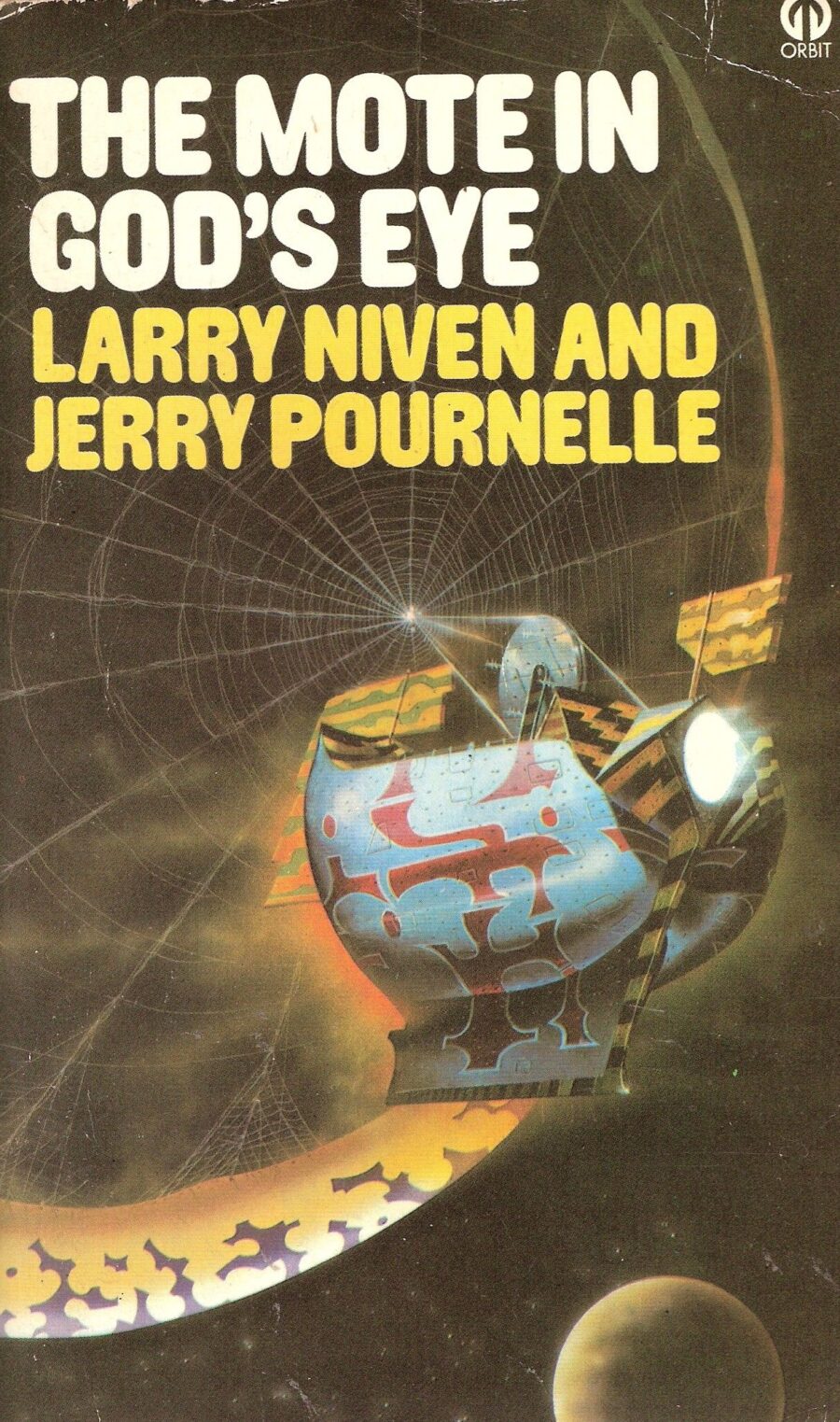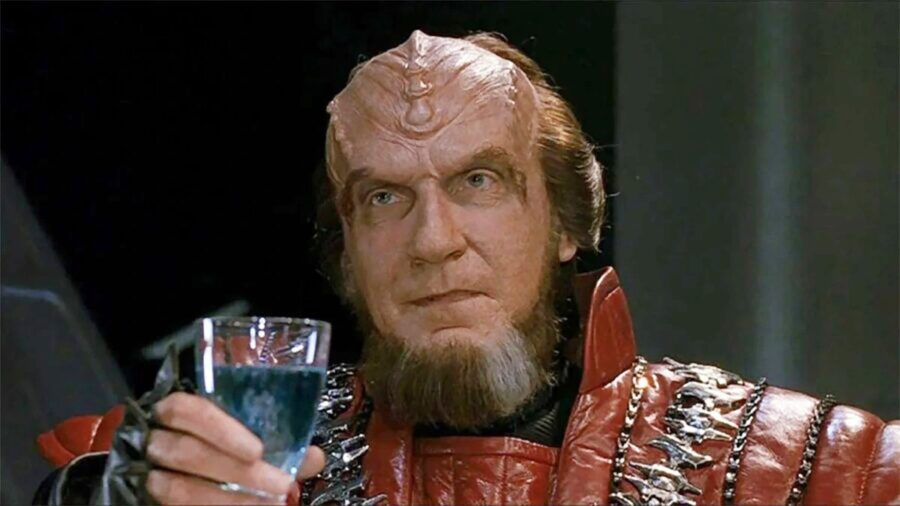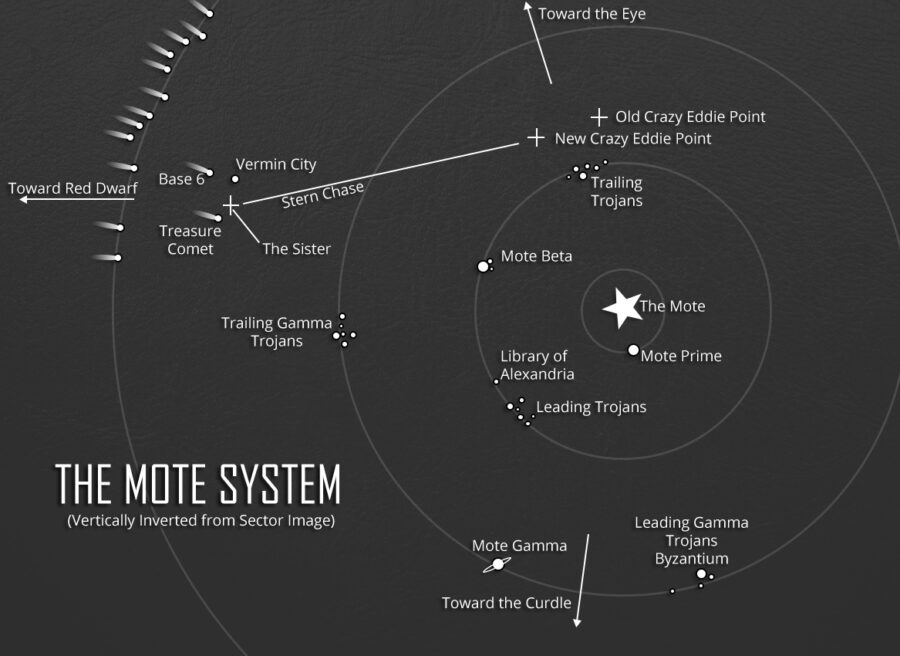The Mote In God’s Eye Is The Best Sci-Fi Classic You’ve Never Read
Though it routinely ends up on best of all time lists, somehow the 1974 science fiction novel The Mote in God's Eye never actually seems to get read.
Though it routinely ends up on best-of-all-time lists, somehow, the 1974 science fiction novel The Mote in God’s Eye never actually seems to get read. It deserves to be mentioned alongside the work of great masters, and it is, in fact, the greatest work of two such acclaimed writers. It’s a collaboration between greats Larry Niven and Jerry Pournelle.

Maybe it’s the title that keeps so many otherwise dedicated hard sci-fi aficionados away from it. The Mote in God’s Eye sounds like a joke or some sort of bad pun. Read the book and it makes sense, but sitting there and staring at the cover, it seems like someone’s bad attempt at a Terry Pratchet parody rather than a serious science fiction story.
Serious is exactly what it is. In fact, it may be one of the best books ever written. At the least, it does something no other work of science fiction has ever done: It gets aliens right.
The Two Types Of Aliens In Science Fiction

Normally, in any sci-fi format, life from other planets is depicted in one of two ways. The first type is the monster. Ridley Scott’s Alien does that better than most, presenting a completely alien creature that lusts for human blood.
The second type is the intelligent alien. Intelligent aliens are always presented as if they’re one step away from humanity. They may look different from us, but rarely are they too different. They may think differently from us, but not too different.
Usually, a writer creating an alien creature bases it on some facet of human culture. Avatar’s Na’vi, for instance, may be blue, but we recognize their ideology and, to some degree, understand it as a variation on Native American culture. Klingons may be violent and warlike, but they build their lives around concepts we understand, like honor. Rarely is intelligent life from another planet depicted in any other way, and if we meet an alien who seems to think differently, we’re sure to discover we had it all wrong.
The Third Kind of Alien As Depicted By The Mote In God’s Eye
Mote does something few other science fiction works do right, by presenting a completely alien, fully intelligent life form. Rather than basing these creatures on an existing facet of human existence, Pournelle and Niven create a completely alien creature with an utterly alien lifecycle and a totally foreign way of living. From that the two authors extrapolated how such a creature might think. As any real alien creature would, the Moties think in ways we can’t possibly begin to comprehend.
Fear not potential reader, this isn’t a boorish examination of an alien culture. Pournelle and Niven have taken this brilliant construct and injected it into a well-told story.
In a far-off future, man has conquered the galaxy but failed to encounter any intelligent life. Thousands of years later, long after mankind has spread out into the galaxy, we make first contact.
The Mote in God’s Eye charts that first contact, and while it happens, humanity makes the same mistake James Cameron made in Avatar by assigning human ways of thinking to creatures that are absolutely not human. That mistake puts the entire human race in jeopardy and results in one of the most gripping science fiction stories ever told.

There’s a sequel, too, called The Gripping Hand, and it’s every bit as good as the Mote. Most of all, Pournelle and Niven’s work is original. More than thirty years after its writing, even in an era littered with recycled ideas, it’s never been duplicated. If you love science fiction or if you simply love originality, do yourself a favor and pick up a copy of The Mote in God’s Eye.












Login with Google